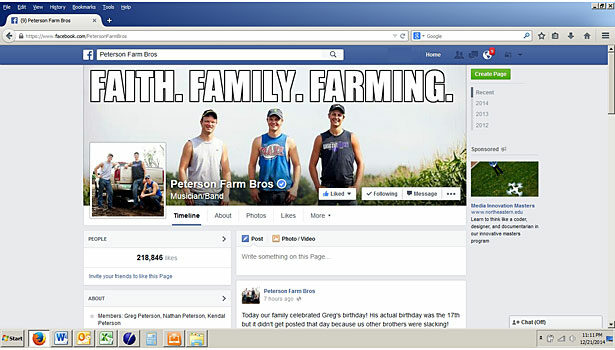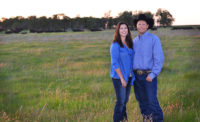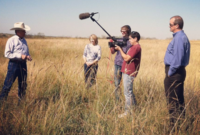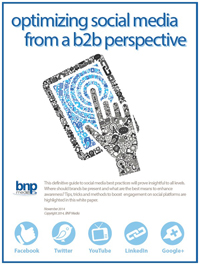Industry Advocacy
Social: the newest mass ‘meat-ium’
The meat industry must engage consumers and tell its story through social media, starting yesterday.






Our industry has an incredible story to tell, but we need to strengthen our voice in order to tell it — our digital voice. Founded on tradition, connection and hard work, people in the meat industry have always respected relationships across all links in the production chain from rancher to consumer. Today, social media is the modern tool needed to continue to develop and support these connections.
“Social media is no longer an option for the meat industry,” said Janet Riley, senior vice president of public affairs at the American Meat Institute. “It needs to become as normal and routine as feeding our animals and washing our hands. It offers the public a peek into our industry and the people who comprise it.”
You do not need to be a social media expert with the most followers, likes or content, but you do need to be a contributor. We all should be adding to the story, sharing our insights and creating a positive and transparent image for the industry. Working together on this goal can and will strengthen our entire community.
“We need to be more proactive in our approach to social media,” said Dr. Jude Capper, livestock sustainability consultant. “All too often we react to the latest report, video clip or blog post with all guns blazing and a ‘burn the witch’ type attitude, which makes us look defensive and as if we have something to hide. We need to be ahead of that curve and put out entertaining, informative pictures, infographics and videos showing what we do every single day — taking care of the animals, land, air and water — to help the consumer feel good when they choose beef (or any other meat) rather than vegetarian and/or vegan options.”
Jeff Carlson, the chairman of the North American Meat Association Marketing Emerging Trends Committee, agrees with the importance of being positive and proactive on social media to promote the industry.
“The power of social media to communicate immediately to a broad audience unfortunately means false information gets spread just as quickly as facts,” Carlson said. “That is why at the North American Meat Association we decided to launch our own effort to broadcast positive, truthful material about the industry. Called ‘Meat Leaders,’ this initiative is dedicated to making sure that the good information, which you might not see elsewhere, gets circulated.”
Being proactive in social media helps to improve awareness for the meat industry. It is the necessary step to take today in order to effectively reach a larger market not solely for sales but to spread the truth about our industry and congratulate ranchers, farmers and producers.
“Younger consumers in many of our international markets are simply not reachable by traditional media. Even online promotions that might have been considered cutting-edge a few years ago are completely foreign to them,” said Joe Schuele, communications director of the U.S. Meat Export Federation. “Social media is a very cost-effective way to introduce these consumers to U.S. meat products and can also serve as an excellent complement to our traditional retail and foodservice promotions.”
David Gage from Mountain States Rosen agrees and uses social media to help people make better and more informed buying decisions. He engages with it as a truly social tool, bringing together communities from all areas of the industry to create a supportive and engaged “digital environment.”
“We use social media to attract new customers to the lamb and veal section of the meat case using bloggers, chefs, online recipes and contests,” Gage said.
Our industry’s social media goal should be simple: Support each other and spread the truth. How do we go about reaching this goal? Start by sharing content as often as possible. Every time you find an interesting article, video clip, quote or photo, simply post it. If you curate informative and interesting information, people will listen and the community will be strengthened.
“People get so worried that they have to create original content for social media, but I think it is more important to cultivate interesting material to show what you care about and give your viewers something else to think about as well,” said Kimmon Williams, communications and marketing manager of the National Turkey Federation. “Not everyone can see everything, but if you see something that may interest your viewers, why not share it with them?”
Riley agrees. Sharing content, whether it is your own or someone else’s, attracts followers and ultimately helps them understand our story.
“Start by sharing content you like from others. Add to it with photos or stories about interesting meals or family anecdotes,” Riley said. “I have found that nearly every tweet results in one more follower, so post and tweet and grow your network.”
Social media does not need to be overwhelming. Start with one platform that speaks to you the most. Here’s a quick introduction to each social media outlet so you can choose which is best for you.
• Facebook allows you create both personal and professional digital profiles that include photos, “likes,” places you frequent, etc.
• Twitter is useful for quick quotes, headlines or tidbits of information. On Twitter, you have a fan base called “Followers” who can retweet or favorite your tweets. Twitter is all about sharing at rapid speeds.
• Instagram is all about photography. Tell your story through beautiful images and capture people’s attention.
• Pinterest allows you to curate your own digital storyboard. “Pin” images, articles, websites, etc. that interest you and organize them in different boards.
• YouTube is the ultimate video platform. Riley and Eric Mittenthal, also with AMI, do an amazing job telling the meat industry’s story through YouTube. With more than 30 published videos online, Meat MythCrushers brings consumers inside the meat plant virtually through a library of videos that promote the truth about the industry. Another noteworthy YouTube sensation is the Peterson Farm Bros. These brothers are from Kansas, work on their family’s farm and film hilarious videos about their life on the farm that show people the truth about farming and cattle raising in creative ways. (Editor’s Note: You also can look up the Peterson brothers on Facebook, where they’ve developed quite the following, and where they also address many misconceptions — with the help of some industry followers as well — that commenters ask about. See the screen capture of their Facebook page on page 82 of this article.)
• LinkedIn is a social platform that focuses mainly on business-to-business connections. It is a digital view into all of the business cards you have collected. It allows you to locate people, understand their professional backgrounds and connect.
• Blogging works as an online diary of important information you have to share. As long as you write informative pieces about interesting topics, people will read them. Plus, blogs are the perfect content to share on all of your social media platforms. Debbie Lyons-Blythe writes a blog called “Kids, Cows and Grass,” which explores her life as a working farm mom in Kansas. In addition to her long list of to-dos, she takes the time to tell her story through her blog. Another great blogger is Anne Burholder, “The Feedyard Foodie.” Because of her goal of spreading transparency, her blog is effectively giving a face to beef production.
Whether you prefer sharing photographs, news updates or your business profile, there is a social media outlet that will help share your voice. You are the voice of the meat industry, and what you have to share is important. Start with one platform and build as you feel more comfortable. No matter where you start creating your digital footprint, it will make a difference in telling the meat industry’s story.
If you need more information about how to use social media, the industry has provided multiple opportunities. Check out AMI’s CAMP program, which conducts webinars with step-by-step guides on how to best get started with social media and to use it effectively. In addition, the Beef Checkoff offers great information about how to get started on social media with E.A.S.E.: engage, acknowledge, share and earn trust.
“We can’t neglect social media; we have to be heard,” said John Johnson, CEO of the National Pork Board. “We recognize the challenge. It is a difficult space to work in, but we have to try because social media is part of our work today.”
We are living in an exciting, innovative time; we should all be taking advantage of social media to tell our story. This is the time to get our voice out there and spread the truth. Go “meat up” online.
Looking for a reprint of this article?
From high-res PDFs to custom plaques, order your copy today!










